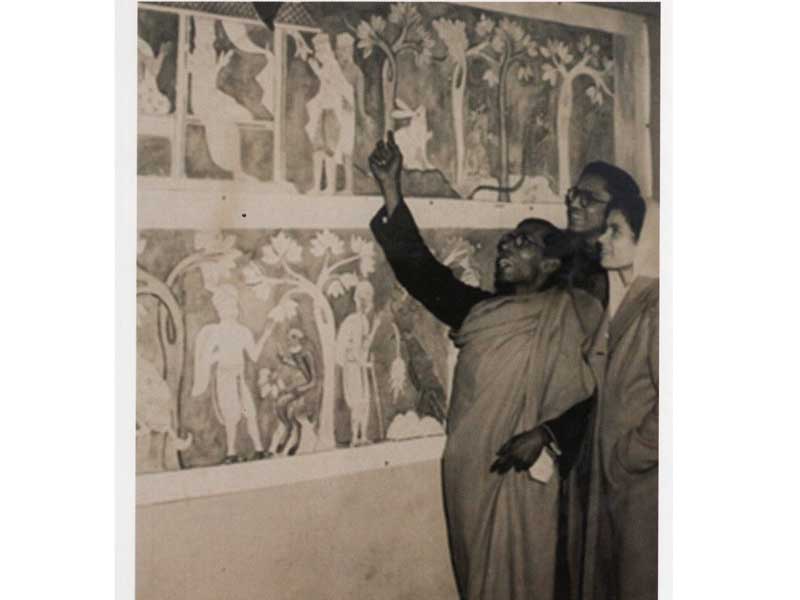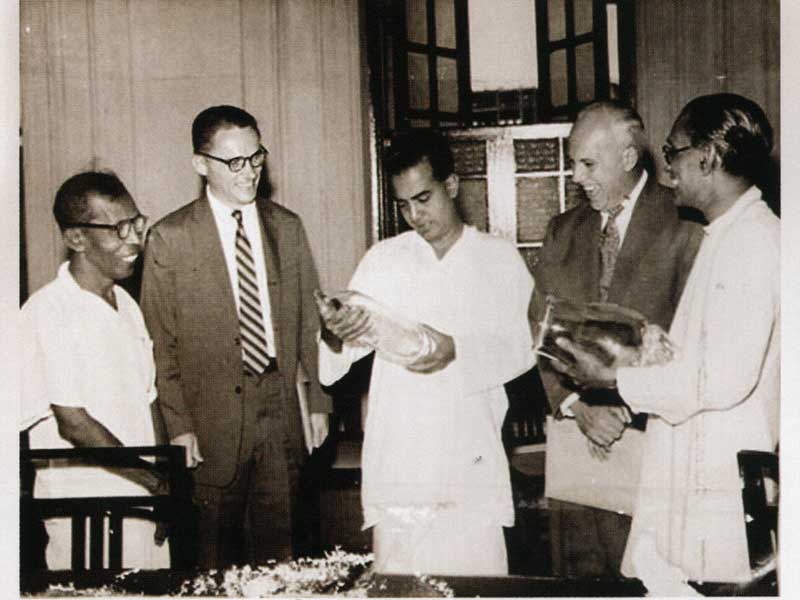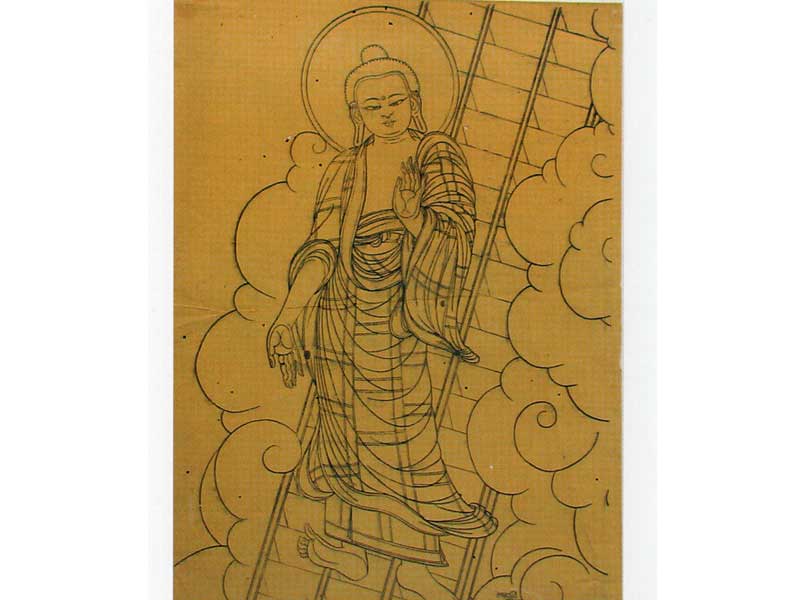








Compiled from the book ‘L.T.P Manjusri: Artist and Scholar’ by Professor Shamil Wanigaratne
Deemed as a national hero, L T P Manjusri is a prolific artist who popularized modern art in Sri Lanka, paving the way for a new generation of artists. In a tribute to the late Manjusri, Professor Shamil Wanigaratne published an all encompassing tome, ‘L.T.P Manjusri: Artist and Scholar’. The author has documented the life journey of Manjusri, contributing to the enrichment of the cultural history of Sri Lanka.
At a young age of 13, Manjusri became a novice monk. The young monk made up his mind to go to Shantiniketan, an academy run by Rabindranath Tagore as he was interested in learning more about Buddhism and languages. During his time there, he fell in love with art and was encouraged by Nandalal Bose, the academy’s professor of art. The professor guided the monk in his journey of art appreciation, specifically Buddhist art. An example of this would be the frescos from Ajanta cave. Bose also encouraged him to explore drawing and painting, a guidance that changed the trajectory of Manjusri’s life. Feeling uplifted by his mentor, Manjusri earnestly began to draw and paint. Impressed with his student’s creations, it is stated that he saw evidence of Western modern art in it, a semblance that was uncommon at that time. Having developed his skills to a satisfactory level, he set on his next mission, a quest to copy temple paintings when he returned home for a short period in 1934. He was particularly entranced by the murals at Sunandarama Vihara in Ambalangoda, near his home at the Mangala Pirivena.
Manjusri was also a founding member of the ’43 Group. The ’43 Group consisted of artists who wished to break away from the Ceylon Society of Arts. Their first exhibition marked the beginning of modern art in Sri Lanka, bringing a cultural shift in Sri Lanka’s art history.
It is said that the exhibition challenged the conservative world of Ceylon at that period. While there were many criticisms directed at the paintings, Manjusri received praised for his work which made him stand out from the rest of the Group.
As a result, it is speculated that he did not feel comfortable with the Group and a possibility that the Group may hinder his career arose. This led to his exit from the Group. Subsequently, Manjusri’s solo career was on a pathway to success as he held exhibitions in Europe.
